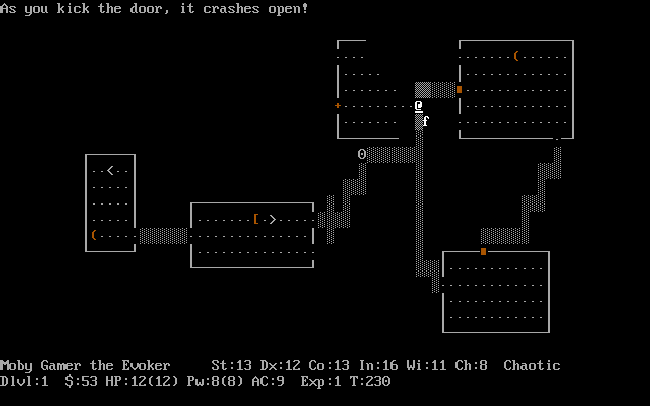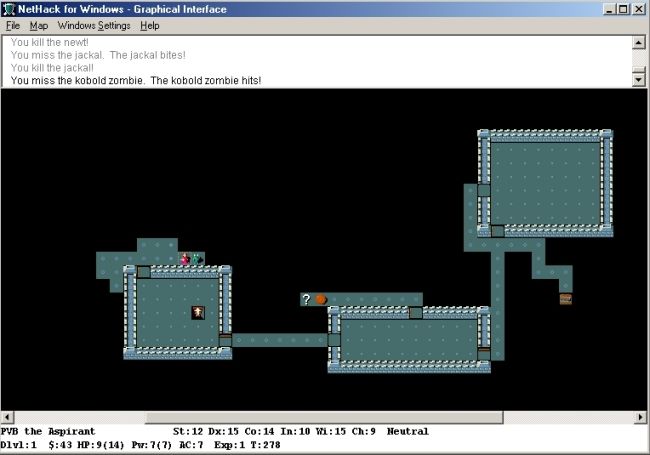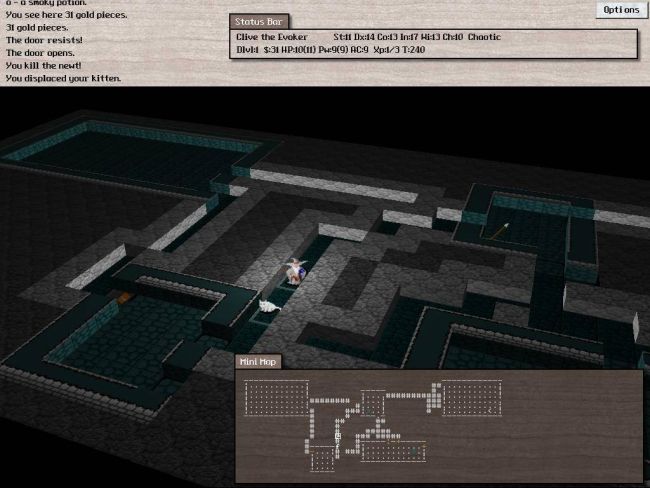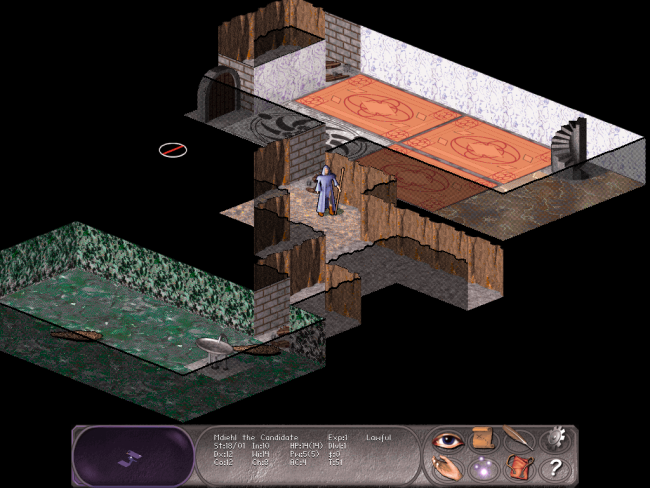The NetHack DevTeam

(The original NetHack)
(“In short, NetHack 3.1.3 is the most elaborate role-playing environment you are ever likely to explore.
This is a place to return again and again, each time for a different experience. You're really going to
have to play it for a year or two and see for yourself.” -- David Gerrold, author)
(“You fall into a pit! How pitiful. Isn't that the pits? You land on a set of sharp iron spikes!
The spikes were poisoned! The poison was deadly...
Do you want your possessions identified?" -- Yet Another Stupid Death)
Even if you’re an avid player of roleplaying games, you may not be immediately familiar with the roguelike subset of the genre. Roguelikes possess a number of defining features, including randomly generated maps, permadeath, turn-based combat, and items with hidden attributes. They are traditionally single-player and almost always involve straight-up, hack-and-slash dungeon crawls with the goal of levelling up, acquiring items, and killing monsters, foregoing any of that pesky “plot” business which only serves, in the end, to distract a player from their hacking and slashing.
As roguelike RPGs go, NetHack is pretty much the definitive item. While it wasn’t the first (that honour goes to 1980’s Rogue, of which NetHack is a descendant, although roguelike elements started appearing as early as 1975 in the likes of Adventure and Dungeon,) NetHack is the one with the most longevity, the one that gained the most dedicated following, and the only one still in active, open-source development to this day, making it the oldest game to continue to receive updates and bugfixes. As it is continually supported, NetHack has evolved, although the core gameplay, mechanics and atmosphere of the game remain; one fascinating aspect of the game is that these layers may be peeled back or completely stripped away and the remainder can still be considered, in a functional sense, wholly NetHack.

(NetHack For Windows)

(Noegnud)

(Falcon's Eye)
NetHack started as a Unix binary and has always had a following of primarily Unix and Linux environment users. It has made the transition to other platforms over the years, and the current version is available to download for Windows, Mac, DOS, Windows CE, OS/2, Atari, and Amiga. An official port called iNetHack has been released for iOS devices, and unofficial versions are available for the PSP and Nintendo DS. You can also play a Java-based version of NetHack, entitled NetHax, in-browser.
| (Although Diablo - a bona fide roguelike which owes a considerable debt to NetHack - has earned a name for itself in North America, the genre itself is generally underrated. In Japan, however, the popularity of roguelike RPGs has skyrocketed, thanks in large part to spin-offs from the Pokemon (Pokémon Mystery Dungeon), Final Fantasy (Final Fantasy Fables: Chocobo's Dungeon) and Dragon Quest (Dragon Quest: Shōnen Yangus to Fushigi no Dungeon) franchises.) |

No comments:
Post a Comment